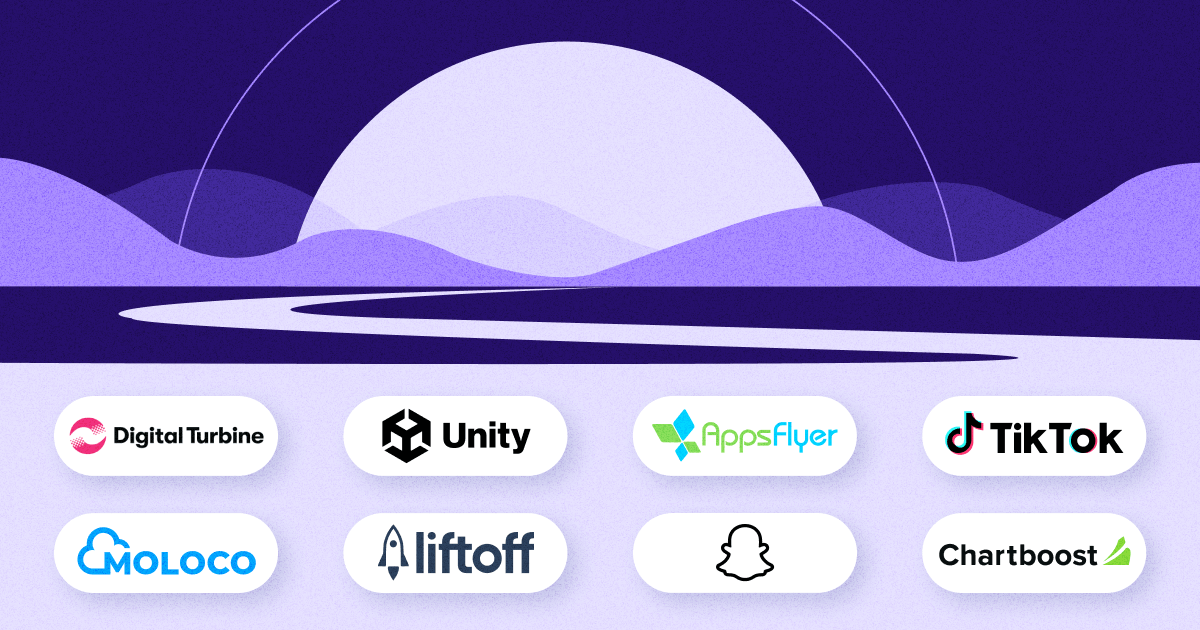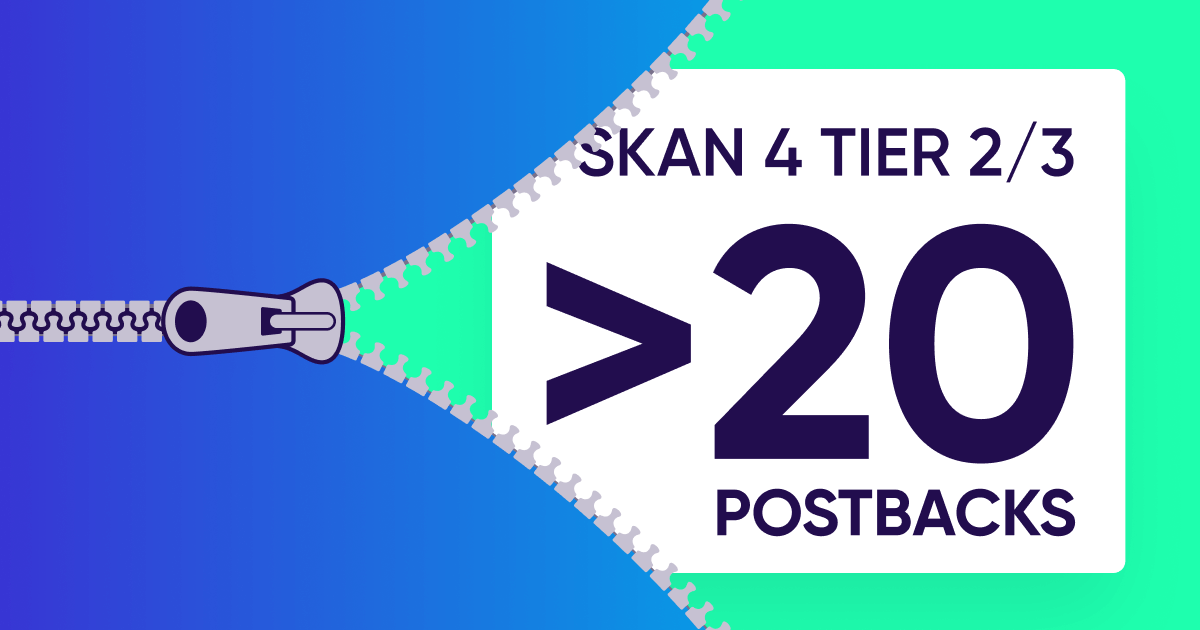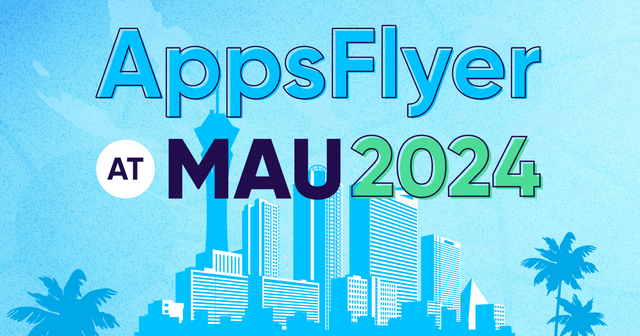
Ad mediation
Ad mediation is the management of multiple ad networks through a single SDK to help publishers increase CPMs, fill rates, and efficiency.
What is ad mediation?
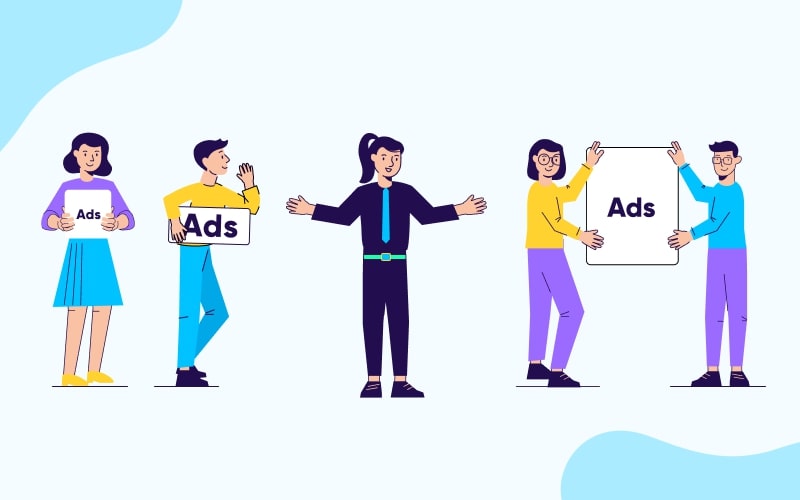
Ad mediation platforms help app publishers manage multiple ad networks on one centralized platform, which streamlines reporting and optimization. Without it, publishers need to manage each ad network through their individual SDKs and platforms.
Ad mediation platforms help publishers sell more inventory and increase fill rates by making each ad network bid against each other. The publishers accept the highest bid, reaching optimal fill rates, and effectively increase eCPMs.
How does ad mediation work?
Ad mediation platforms help advertisers maximize revenue by selling ad space in two primary ways: waterfall bidding and in-app header bidding.
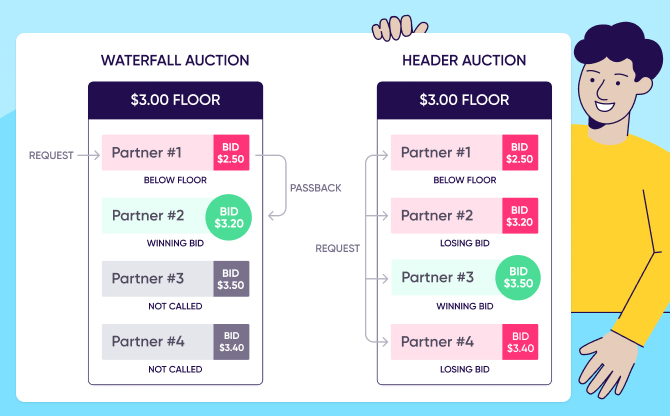
How does in-app header bidding work?
In-app header bidding uses programmatic technology to have multiple advertisers bid in real-time for a certain ad space, where the highest bidder wins. The highest bidder then pays one cent above the 2nd highest bidder. This allows publishers to sell their inventory at the highest price possible and for advertisers to pay a competitive rate.
How does waterfall bidding work?
The older method is waterfall bidding, which is often used for publishers who need to sell remnant inventory quickly. Let’s break it down into 5 steps:
- The mobile app calls the ad mediation platform via the SDK, indicating that a session started and will be requesting an ad.
- The platform identifies which ad network is eligible to show the ad then organizes a sequence of ad networks.
- The ad mediation platform compares each ad network and chooses the networks with the highest expected performance. Alternatively, ad networks can provide preference to specific ad networks and be locked in to a spot regardless of expected performance.
- The mediation platform asks the top ad network to fill the ad request. If they don’t fill the request, it’s passed on to the 2nd ad network. This continues until the ad space is filled.
- The SDK displays the winning ad on your mobile app
What are the benefits?
The first problem publishers need to solve is increasing how much of their ad inventory is sold, also known as fill rates. This is done by working with more ad networks and getting advertisers to bid against each other for your ad space, which can be done on an ad mediation platform.
They allow publishers to manage multiple ad networks by only using one singular platform and SDK. In comparison, campaign managers don’t have to go into each individual ad network interface to manage and optimize campaign performance separately. Instead, they get a top-down view of all their ad networks, which provides access to more opportunities to sell ad space and improve campaign performance at scale.
Ad mediation platforms enable publishers to optimize CPMs, average revenue per paying user (ARPPU), average revenue per daily active user (ARPDAU), average revenue per daily engaged user (ARPDEU), fills rates, and more. Ultimately, ad mediation platforms solve for scale, management, and efficiency.
One caveat is that Facebook and Google don’t share all their data with ad mediation platforms. In some cases, the campaign manager will still need to use additional platforms to manage their campaigns.
The top 4 mobile ad mediation platforms
There are many ad mediation platforms that offer a wide range of bidding options, reporting features, and integrations. The four most popular ad mediation platforms today are AdMob by Google, ironSource, MoPub, and Max.
How do you choose the right platform for you?
With so many platforms to choose from, how do you make a decision? Use these guiding questions to find the right ad mediation platform for you:
- Which ad network is supported? Make sure the ad networks that you’re currently advertising on and the ad networks you want to use in the future are integrated with the platform.
- How is the user experience? One of the greatest benefits of these platforms is to streamline campaign management. Ensure the reports are easily accessible and the workflow saves you time.
- Is the server reliable? You don’t want to work with a platform with significant downtimes. The less reliable they are, the more money you’ll lose.
- What additional campaign optimization capabilities do they offer? Ask for ways the platform can help you improve campaign performance. Do they provide audience segmentation and campaign testing capabilities? How is their customer support and data safety protocols?
Key takeaways
- Ad mediation platforms help app publishers and developers to manage multiple ad networks on one centralized platform, which streamlines reporting and optimization.
- Ad mediation platforms help with fill rates and increase CPMs by making ad networks bid against each other for your ad space.
- There are two main app bidding techniques on ad mediation platforms: header bidding and waterfall (the older one).
- Not all ad mediation platforms are made equal. Ensure you ask the right questions to meet your individual needs.

